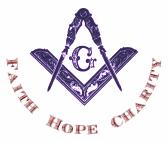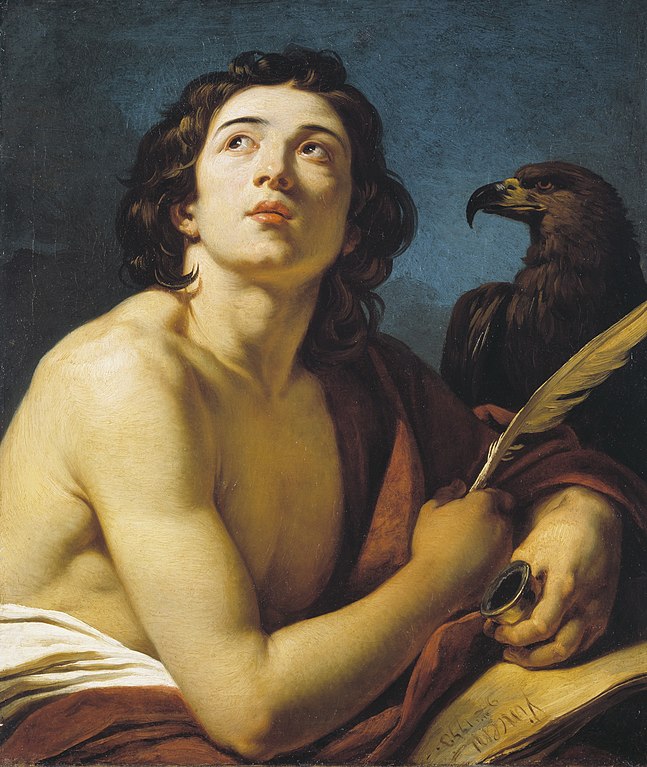St. John the Evangelist

Main | Speaking | Web Resources | Erik's Masonic Journey | Curriculum Vitae
Copyright © 2010-2020 Erik L. Arneson
Masonic lodges in the United States are dedicated to Saints John the Evangelist and John the Baptist. Their feast days, on December 27th and June 24th, respectively, are often celebrated by lodges, with John the Evangelist's being the most important, as it marks the point at which the leadership of the lodge passes to the next year's officers. Washington Lodge recently celebrated the Feast of Saint John the Evangelist, and to mark this, we will look at this important figure in the history of Freemasonry.
 The association between Freemasonry and these two saints is so
strong that before the 19th century, it was common to refer to
Craft lodges as "St. John lodges" to differentiate them from lodges
which practiced the hautes grades. In fact, almost every
jurisdiction or grand lodge descended from English Freemasonry has
at least one lodge named St. John. At one point, Connecticut had
five lodges named St. John, and even tiny Rhode Island had two of
them. The association is so strong, in fact, that there are more
Scottish lodges named after the Sts. John than there are after
St. Andrew.
The association between Freemasonry and these two saints is so
strong that before the 19th century, it was common to refer to
Craft lodges as "St. John lodges" to differentiate them from lodges
which practiced the hautes grades. In fact, almost every
jurisdiction or grand lodge descended from English Freemasonry has
at least one lodge named St. John. At one point, Connecticut had
five lodges named St. John, and even tiny Rhode Island had two of
them. The association is so strong, in fact, that there are more
Scottish lodges named after the Sts. John than there are after
St. Andrew.
John the Evangelist as a Biblical character was the author of the Gospel of John. In addition, he has long been associated with the "beloved disciple" mentioned throughout the gospels, and was probably the author of the Epistles of John. He is not, however, to be confused with the John who wrote Revelations, who is usually distinguished with the toponym John of Patmos. The Gospel of John distinguishes itself as being the only non-synoptic canonical gospel, which means that it comes from completely different sources than the other three gospels. It is also the only gospel commonly identified by Biblical scholars as being probably authored by its claimed author.
According to Biblical accounts, John was the son of Zebedee and Salome and the brother of James the Greater. As the "most beloved of disciples," he sat closest to Jesus during the Last Supper, was with Simon Peter at the discovery that Jesus's tomb was open, and was with several other disciples at the Sea of Tiberias during one of Jesus's post-resurrection appearances. He was instrumental in founding the Christian Church, and supposedly cared for Mary in her old age. Along with Judas, he is one of the only two disciples who was not martyred. Instead, he died of old age in Ephesus during the 2nd century.
There has been quite a bit written about the curious connection between Freemasonry and the Saints John. Neither of them are associated with building or construction. However, the Craft's connection to these luminaries stretches back to its birth, and it is difficult to separate Freemasonry in the United States from the influence and importance of the Saints John.
Further Reading
Coil, Henry W. Coil's Masonic Encyclopedia. Macoy Pub & Masonic Supply Co (1996). http://www.librarything.com/work/477366/book/96259926.
Metzger, Bruce M. The Oxford Companion to the Bible (Oxford Companions). Oxford University Press, USA (1993). http://www.librarything.com/work/156066/book/62386625.
The New American Bible. World Publishing, Catholic World Press (1997). http://www.librarything.com/work/318628/book/96259980.
This website is a participant in the Amazon Services LLC Associates Program, an affiliate advertising program designed to provide a means to earn fees by linking to Amazon.com and affiliated sites.